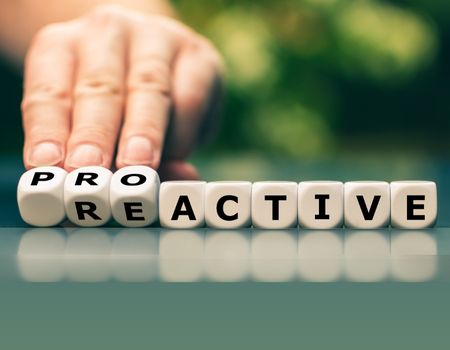Fundraising professionals frequently ask themselves: How can we secure more blended and estate gifts to advance our mission? This question is especially relevant to nonprofit sub-sectors such as healthcare, arts and culture, social services, etc.) as they often have less mature gift planning programs. Since deferred gifts may not be realized for eight to ten years hence, the need for current gifts too often clouds the vision for, and execution of, an effective planned giving program.
As trailing and leading baby boomers reach their late fifties and mid-seventies, respectively, a golden opportunity exists for gift planning: [i]
- The baby boomer generation’s total wealth exceeds $64 trillion[ii]
- 40 percent of boomers are retired [iii]
- The inter-generational transfer of their wealth is currently underway. [iv]
While donors in their fifties and sixties typically have needs and goals that differ from donors in their mid-seventies, eighties and nineties, gift planning offers solutions for all.
An evolution in gift planning
The Tax Reform Act of 1969 gave institutions, donors and advisors rules that govern split interest gifts, which included charitable remainder and charitable lead trusts. Exceptions were “tax shelters” marketed by nonprofit institutions that effectively functioned as charitable remainder trusts. [v] Even with the advent of split interest gifts in the late sixties, planned giving was reserved for donors in their seventies, eighties and nineties with a continued emphasis on bequests.
The planned giving landscape has changed significantly since 1969. The fundraising vernacular to describe these programs has evolved from deferred giving, to planned giving, and now the preferred term is gift planning. This change is much more than mere semantics; it reflects the growth and sophistication of when and how more mature fundraising programs engage in gift planning discussions with prospects.
Influences in the evolution of gift planning
Three important factors influenced this evolution in the gift planning space: the significant increase in wealth in the US over the past two decades, an increased recognition that gift planning vehicles can address donors’ needs caused by greater wealth, and donors desire to make a significant impact on organizations most important to them during life rather than only at death. Let’s consider these three factors in more detail.
The increase of US household net worth
Firstly, according to the Federal Reserve, the average US household net worth in 2019 was $746,821.05 compared to $189,367.92 in 1989. [vi] For the top one, five and ten percent households, net worth increases were equal to, or more significant than, the general population, as noted in Tables 1-3.
Top 10% Household Net Worth by Year
| Years | Top 10% Net Worth |
| 1989 | $368,000.00 |
| 2019 | $1,219,499.00 |
Top 5% Household Net Worth by Year
| Years | Top 5% Net Worth |
| 1989 | $693,360.00 |
| 2019 | $2,598,400.00 |
Top 1% of Household Net Worth by Year
| Years | Top 1% Net Worth |
| 1989 | $2,321,030.00 |
| 2019 | $11,121,000.00 |
These data points are important when one considers that, according to U.S. Trust, 90 percent of high-net-worth households (an annual household income greater than $200,000 and/or net worth greater than $1,000,000, excluding primary residence) reported making charitable donations compared to 56 percent of the general population. [vii] This study found that high net worth donors gave $29,269 to charity in 2017 compared to the general population that donated $2,514 to charity the same year. The significant increase in wealth alone creates meaningful gift planning opportunities for the third sector.
More complex donor needs
Secondly, a material increase in wealth is often accompanied by more complex donor needs and goals that gift planning may help solve and meet. These needs and goals include writing a first will or trust, updating an existing estate plan, how and when to make gifts of assets rather than gifts of cash, tax planning, long-term income needs/goals, inter-generational wealth transfer decisions/goals, and best practices and strategies for leaving a legacy at a healthcare organization and other not-for-profit institutions. For some higher-capacity donors, their needs and goals are much more than to simply make a major, principal or campaign gift to an organization.
Solutions to donor needs and goals sometimes require more than simple options. The Giving USA Foundation Leaving a Legacy report found that 19 % of respondents reported funding a current charitable trust (no testamentary charitable trusts were reported). [viii] Charitable trusts can uniquely meet donors’ income, inter-generational wealth transfer, tax reduction, and philanthropic goals. The report also found that donors who funded charitable trusts had a net worth of $10,000,000 or greater and that they funded charitable trusts only after consideration of less complex gift options. This highlights the fact that for many higher-capacity donors, a simple bequest does not solve their needs or meet their personal, family or philanthropic goals.
Seeing impact during their lifetime
Thirdly, most donors with whom my colleagues and I work want to help nonprofit organizations “all they can, when they can.” These high affinity, higher-capacity donors want to make a significant impact on organizations most important to them during life as well as at death. However, few donors understand the benefits and effects of gift planning on their estate, their heirs and your organization: save their knowledge of bequest giving. They are busy working, traveling, caring for family members, volunteering – living life. It is a gift officer’s responsibility to spend the requisite amount of time with donors to understand their perceived and real needs and to subsequently offer relevant solutions at the time of need rather than waiting until donors are in their 70s or 80s.
How should the three aforementioned factors shape or modify an organization’s gift planning program? Consider introducing donor-centric gift planning earlier in a donor’s cycle of generosity – even donors in their early 50s who have the right fact pattern. The following illustrates an outcome of this strategy.
A Case Study: Prisma Health Upstate
Prisma Health Upstate, located in Greenville, South Carolina, is part of Prisma Health, includes an academic medical center, and is the largest health system in the state. The Office of Philanthropy’s leadership made a decision to introduce donor-centric gift planning earlier in their high-affinity, higher-capacity donors’ cycle of generosity. The results are interesting and instructive.
Table 4 lists the ages of donors who were engaged in gift planning conversations and the percentages of each age category. Note that 66 percent of donors were in their 50s and 60s.
| Age | Percentage of Donors |
| 50s | .33% |
| 60s | .33% |
| 70s | .29% |
| 80s | .05% |
Hard data for the average size of realized planned gifts in the US is difficult to source, but a recent report on bequests is useful. “Everyday” donors in the study included an average bequest of $78,630 in their estate plans. [ix] However, Prisma Health Upstate’s average planned gift is $928,000, which is nearly twelve times the national average. Gifts used to calculate the institution’s average are documented and include gift agreements based on the impact and legacies these donors want to leave. Importantly, these gifts, listed in Table 5, include a mix of vehicles, and all but two gift pathways help the healthcare system now.
| Gift Pathways |
| Appreciated Stock |
| Bequests |
| Cash |
| Current Charitable Lead Annuity Trusts |
| Current Charitable Remainder Trusts |
| Qualified Charitable Distributions |
| Real Estate |
Donors in this cohort funded full and partial scholarships at the University of South Carolina’s School of Medicine Greenville, programs and endowments for Prisma Health Upstate Children’s Hospital, programs for the Cancer Institute, neuroscience, and a camp for children with cancer, to name a few.
These donors are current business owners, practicing and retired physicians, a former Fortune 500 CEO, senior health system executives, investment advisors, insurance professionals, and long-term current and retired employees of corporations – not dissimilar to donors in any gift officer’s portfolio. However, very few of these donors are truly wealthy by US standards yet were able to make meaningful gifts as young as age 51.
A short list of needs and goals that philanthropy solved and met for this donor cohort include:
- Establish an endowment
- Estate planning update
- Leave a legacy
- Long-term income
- Make the greatest impact on those served by Prisma Health Upstate
- Reduce size of estate
- See fruits of generosity during life
- Meet scholarship recipients during life
- Tax savings – ordinary income, capital gains, and estate tax
Relationship-based fundraising
Relationship-based fundraising is essential to introducing gift planning earlier in a donor’s cycle of generosity. Gift officers re-orient donor discussions from institution-focused to donor- focused, while articulating the compelling needs of one’s organization. The purpose of most donor meetings is to build trusting relationships and to fully understand their needs and goals that may include:
- Did their youngest child recently marry?
- Was their first grandchild recently born?
- For childless donors, how do they wish to leave a legacy?
- Are they approaching retirement?
- Are they expecting or did they recently experience a liquidity event?
- Have they recently received an inheritance?
- Do they have tax liability concerns?
- Would they like their giving to be more strategic and measure their gift’s impact?
- Are they interested in endowment?
- Would they like to experience the joy of meeting scholarship recipients?
- Do they want to leave a significant legacy with your organization?
- Is your organization one of their three top charities?
While this is not a complete list, it is a good start to better understand the fact pattern of a donor for whom gift planning discussions earlier in their cycle of generosity is appropriate. The youngest and oldest Prisma Health Upstate donors in its gift planning cohort, aged 51 and 82, funded current charitable lead annuity trusts. The younger donor’s needs differed greatly from those of older donor. Yes, gift planning solved each of their problems with a similar gift vehicle: the younger donor a grantor charitable lead annuity trust and the older donor a non-grantor charitable lead annuity trust. If not for the introduction of gift planning earlier in the younger donor’s cycle of generosity, then this gift would likely not have come to fruition until a much later life stage.
Prisma Health Upstate’s Office of Philanthropy leadership could have continued their previous major and principal gifts’ strategy with high-affinity, higher-capacity donors in their 50s and 60s and postponed the gift planning discussions until later in life. Many of these donors would have likely named Prisma Health Upstate as a charitable beneficiary in their estate plans due to their affinity for the health system. Moreover, a small percentage of those estate gifts may have been significant, but many would have been average-sized bequests rather than an average gift of more than $900,000.
Once a donor adds a charitable beneficiary to one’s estate plan, that donor’s current giving increases an average of 77 percent over the follow four-year period compared to the previous four years ($4,355 versus $7,699 per year). [x]
Two-thirds of this donor cohort should have two – three more decades of continued engagement with Prisma Health Upstate but at a much deeper level. Moreover, they get to experience the joy of seeing the fruits of their generosity during life. Perhaps most importantly, these donors benefited from thoughtful donor-centric gift planning earlier in their cycle of generosity that allowed them to give “all they can, when they can.”
[i] The Transfer of Wealth, Welcome to the Windfall Years, 04-13, The Chronicle of Philanthropy, 2018
[ii] Federal Reserve, 2021, Q4, Distribution of Wealth, Distribution of Household Wealth Since 1989, https://www.federalreserve.gov/releases/z1/dataviz/dfa/distribute/table/#quarter:119;series:Net%20worth;demographic:generation;population:all;units:levels
[iii] Fry, Richard, 9 November 2020, “The pace of Boomer retirement has accelerated in the past year,” https://www.pewresearch.org/fact-tank/2020/11/09/the-pace-of-boomer-retirements-has-accelerated-in-the-past-year/
[iv] Welcome to the Windfall Years, p ???, The Chronicle of Philanthropy, 2018
[v] Sharpe Group, 2008, Was Planned Giving Invented in 1969?, Sharpe Insights, https://sharpenet.com/give-take/planned-giving-invented-1969/
[vi] Federal Reserve, 2020, Survey of Consumer Finances, Assets by All Families, https://www.federalreserve.gov/econres/scfindex.htm
[vii] Bank of America, 2018, The 2018 U.S. Trust Study of High Net Worth Philanthropy, https://www.privatebank.bankofamerica.com/articles/2018-us-trust-study-of-high-net-worth-philanthropy.html
[viii] Giving USA Special Report: Leaving a Legacy, p. 19 and 41, Giving USA Foundation, 2019
[ix] Stiffman, Eden, Survey of Wills Created by Everyday Donors Shows an Average Bequest of $78,630, The Chronical of Philanthropy, 28 August 2019, https://www.philanthropy.com/article/survey-of-wills-created-by-everyday-donors-shows-an-average-bequest-of-78-630?cid2=gen_login_refresh&cid=gen_sign_in
[x] Russell N. James III, J.D., Ph.D., The Emerging Potential of Longitudinal Empirical Research in Estate Planning: Examples from Charitable Bequests (https://lawreview.law.ucdavis.edu/issues/53/5/symposium/files/53-5_James.pdf2020), 2422-2423.



